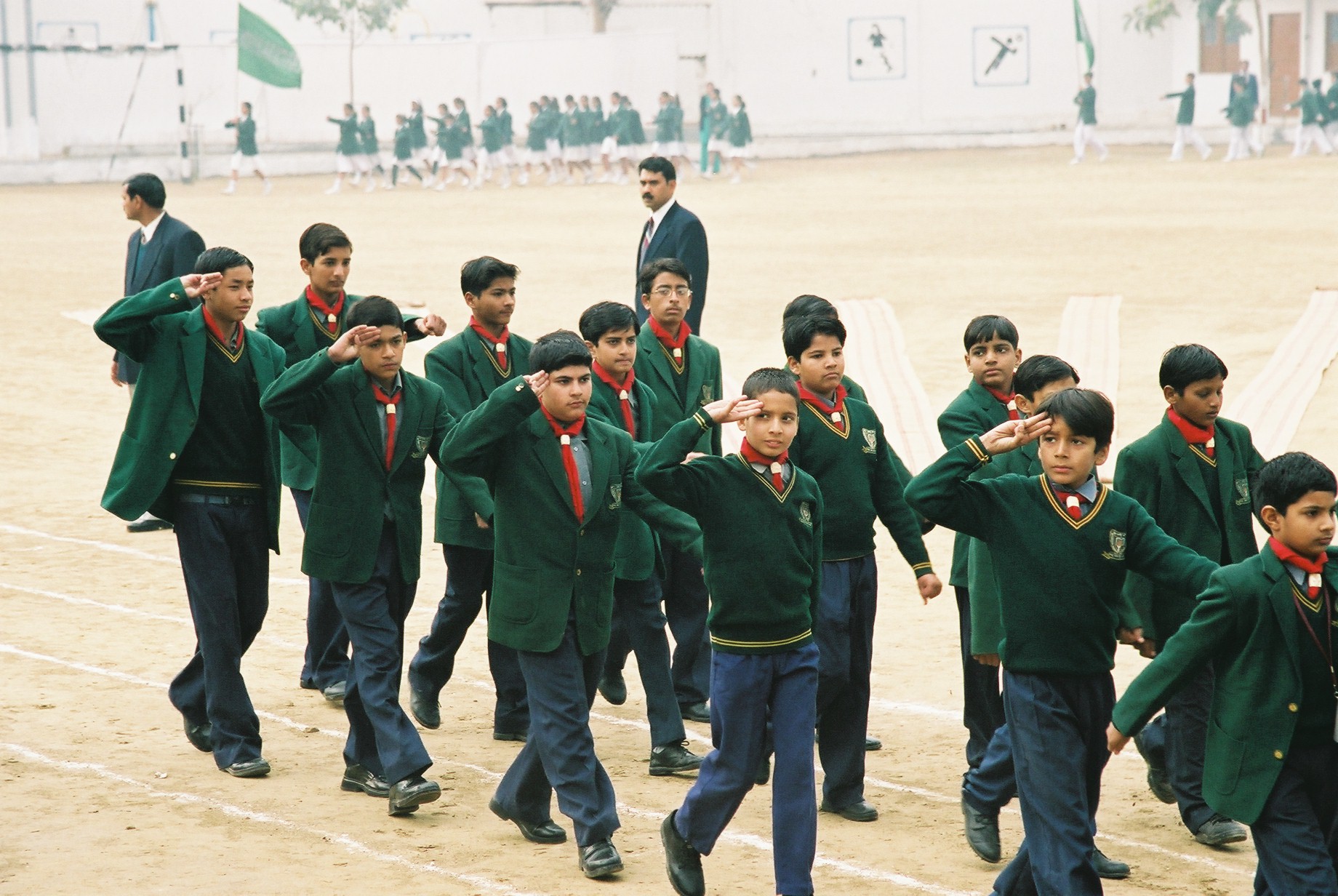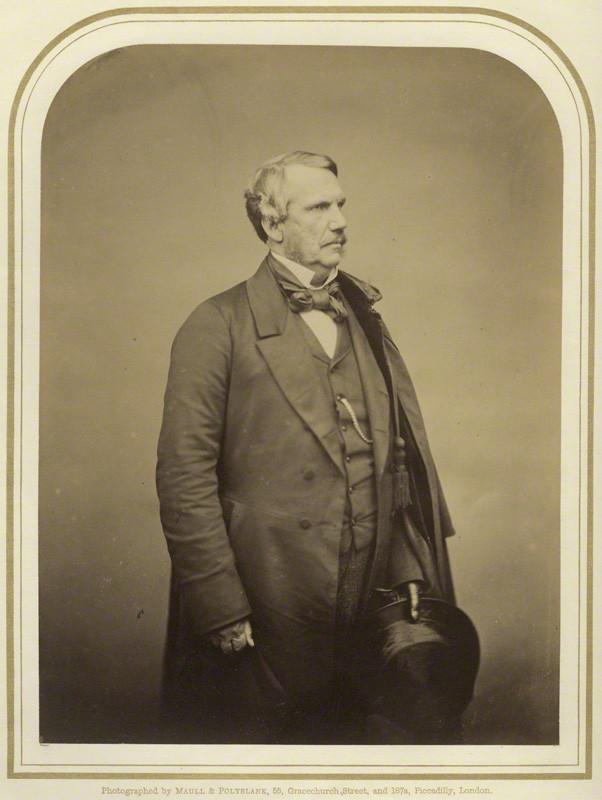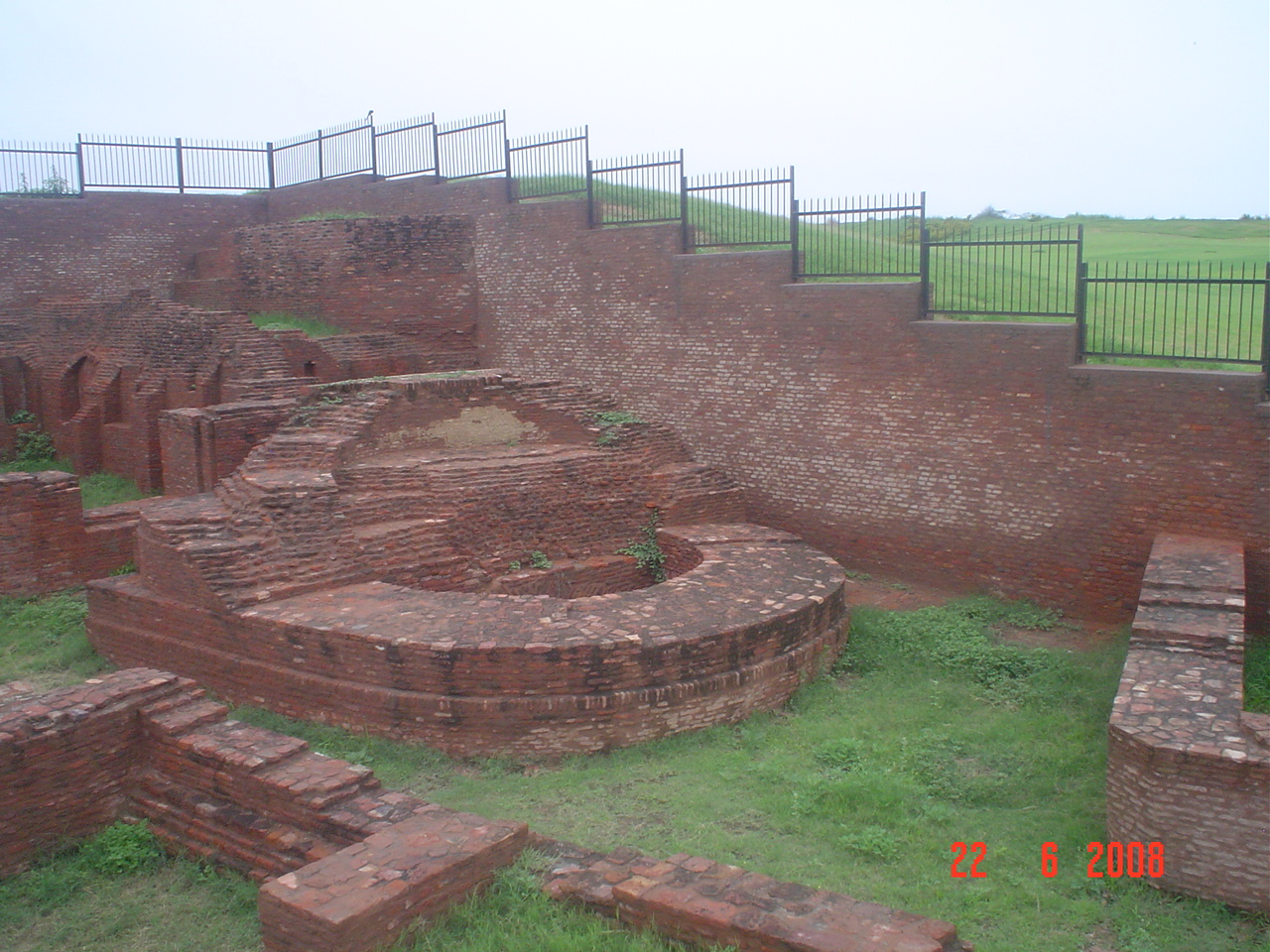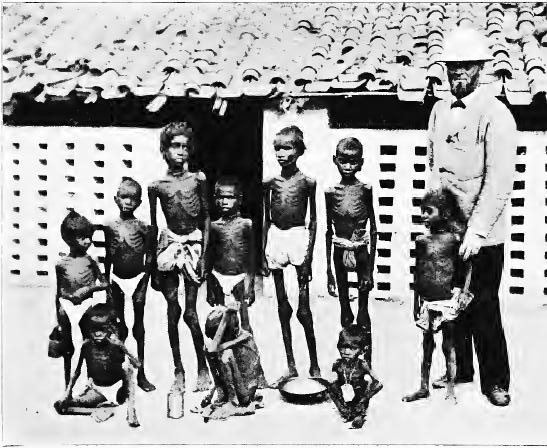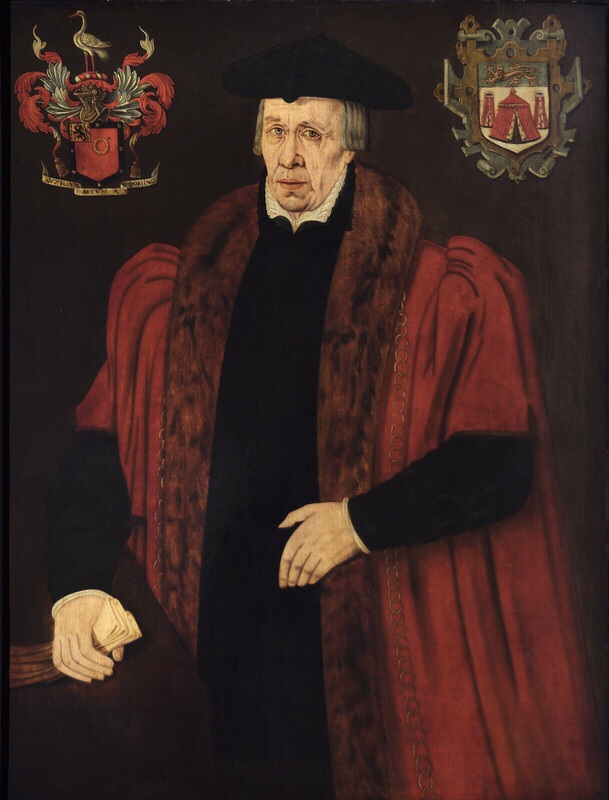|
Chandulal Madhavlal Trivedi
Sir Chandulal Madhavlal Trivedi (2 July 1893 – 15 March 1980) was an Indian administrator and civil servant who served as the first Indian governor of the state of Punjab (then East Punjab) after Independence in 1947. He subsequently served as the first Governor of Andhra Pradesh from its creation in 1953 until 1957. Life and early career Trivedi was born and raised in Kapadvanj in Kaira (now Kheda) District, then in the Bombay Presidency of British India and now in Gujarat. After completing his studies at Bombay University and at St John's College, Oxford, he successfully sat the Indian Civil Service exams in 1916 and was appointed to the service the following October, returning to India in December 1917. He first served in the Central Provinces as an assistant commissioner (officiating deputy commissioner from January 1924), and as the provincial director of industries and registrar of cooperative societies from November 1926; until then, he had served in the position in ... [...More Info...] [...Related Items...] OR: [Wikipedia] [Google] [Baidu] |
List Of Governors Of Andhra Pradesh
The governor of Andhra Pradesh is the head of state of the Indian state of Andhra Pradesh. Governors in India have similar powers and functions at the state level as those of the president of India at the central level. They exist in the state appointed by the president of India and they are not local to the state that they are appointed to govern. The factors based on which the president evaluates the candidates is not mentioned in the constitution. The governor acts as the nominal head whereas the real power lies with the Chief Minister of the state and their council of ministers.This is a list of governors of Andhra Pradesh, including Andhra State and united Andhra Pradesh, in office from 1953 to the present date. The official residence of the governor is the Raj Bhavan, situated in Vijayawada. E. S. L. Narasimhan is the longest serving governor. The current incumbent is S. Abdul Nazeer since 24 February 2023. Qualifications Article 157 and Article 158 of the Co ... [...More Info...] [...Related Items...] OR: [Wikipedia] [Google] [Baidu] |
Order Of The Star Of India
The Most Exalted Order of the Star of India is an order of chivalry founded by Queen Victoria in 1861. The Order includes members of three classes: # Knight Grand Commander ( GCSI) # Knight Commander ( KCSI) # Companion ( CSI) No appointments have been made since the 1948 New Year Honours, shortly after the Partition of India in 1947. Following the death in 2009 of the last surviving knight, the Tej Singh Prabhakar, Maharaja of Alwar, the order became dormant. The motto of the order was "Heaven's Light Our Guide". The Star of India emblem, the insignia of the order and the informal emblem of British India, was also used as the basis of a series of flags to represent the Indian Empire. The order was the fifth most senior British order of chivalry, following the Order of the Garter, Order of the Thistle, Order of St Patrick and Order of the Bath. It is the senior order of chivalry associated with the British Raj; junior to it is the Order of the Indian Empire, and there ... [...More Info...] [...Related Items...] OR: [Wikipedia] [Google] [Baidu] |
Kaisar-i-Hind Medal
The Kaisar-i-Hind Medal for Public Service in India was a medal awarded by the Emperor/Empress of India between 1900 and 1947, to "any person without distinction of race, occupation, position, or sex ... who shall have distinguished himself (or herself) by important and useful service in the advancement of the public interest in India." The name "Kaisar-i-Hind" ( ''qaisar-e-hind'', ) literally means " Emperor of India" in the Hindustani language. The word ''kaisar'', meaning "emperor" is a derivative of the Roman imperial title Caesar, via Persian (see Qaysar-i Rum) from Greek Καίσαρ ''Kaísar'', and is cognate with the German title Kaiser, which was borrowed from Latin at an earlier date. Based upon this, the title '' Kaisar-i-Hind'' was coined in 1876 by the orientalist G.W. Leitner as the official imperial title for the British monarch in India.B.S. Cohn, "Representing Authority in Victorian India", in E. Hobsbawm and T. Ranger (eds.), ''The Invention of Tradition'' ... [...More Info...] [...Related Items...] OR: [Wikipedia] [Google] [Baidu] |
Bharat Scouts And Guides
The Bharat Scouts and Guides (BSG) is the national Scouting and Guiding association of India. The national headquarters of BSG is recognised by the Government of India. Scouting was founded in India in 1909 as an overseas branch of the Scout Association and became a member of the World Organization of the Scout Movement in 1938. Guiding in India started in 1911 and was amongst the founder members of the World Association of Girl Guides and Girl Scouts in 1928, also covering present-day Bangladesh and Pakistan at that time. The BSG serves 3,835,094 Scouts (as of 2021) and 1,286,161 Guides (as of 2005). History Boy Scouts Scouting was officially founded in British India in 1909, first starting at the Bishop Cotton Boys' School in Bangalore. Scouting for native Indians was started by Justice Vivian Bose, Madan Mohan, Hridayanath Kunzru, Girija Shankar Bajpai, Annie Besant and George Arundale, in 1913. Prior to this date, Scouting was open only for British and foreign Scouts. ... [...More Info...] [...Related Items...] OR: [Wikipedia] [Google] [Baidu] |
List Of Deputy Chairpersons Of The Planning Commission Of India
A list is a set of discrete items of information collected and set forth in some format for utility, entertainment, or other purposes. A list may be memorialized in any number of ways, including existing only in the mind of the list-maker, but lists are frequently written down on paper, or maintained electronically. Lists are "most frequently a tool", and "one does not ''read'' but only ''uses'' a list: one looks up the relevant information in it, but usually does not need to deal with it as a whole".Lucie Doležalová,The Potential and Limitations of Studying Lists, in Lucie Doležalová, ed., ''The Charm of a List: From the Sumerians to Computerised Data Processing'' (2009). Purpose It has been observed that, with a few exceptions, "the scholarship on lists remains fragmented". David Wallechinsky, a co-author of ''The Book of Lists'', described the attraction of lists as being "because we live in an era of overstimulation, especially in terms of information, and lists help us ... [...More Info...] [...Related Items...] OR: [Wikipedia] [Google] [Baidu] |
List Of Governors Of Punjab (India) ...
This is a list of the governors of Punjab state in India since 1 April 1849 its partition on 15 August 1947. Since 1985, the governor of Punjab has acted as the administrator of Chandigarh. There are 32 governors with additional charge. Before Independence After Independence * Governor served in Acting capacity * Governor holds Additional Charge Rajpramukh of PEPSU (1948–1956) Source: See also * Punjab, India * Chief Minister of Punjab * Governor (Indian states) References External links * * {{Administrators of provinces in British India Punjab Governors A governor is an politician, administrative leader and head of a polity or Region#Political regions, political region, in some cases, such as governor-general, governors-general, as the head of a state's official representative. Depending on the ... [...More Info...] [...Related Items...] OR: [Wikipedia] [Google] [Baidu] |
Haryana
Haryana () is a States and union territories of India, state located in the northern part of India. It was carved out after the linguistic reorganisation of Punjab, India, Punjab on 1 November 1966. It is ranked 21st in terms of area, with less than 1.4% () of India's land area. The state capital is Chandigarh, which it shares with the neighbouring state of Punjab; the most populous city is Faridabad, a part of the National Capital Region (India), National Capital Region. The city of Gurgaon is among India's largest financial and technology hubs. Haryana has Divisions of Haryana, administrative divisions, List of districts of Haryana, districts, 72 sub-divisions, 93 tehsil, revenue tehsils, 50 sub-tehsils, 140 Community development block in India, community development blocks, 154 List of cities in Haryana by population, cities and towns, 7,356 villages, and 6,222 Gram panchayat, villages panchayats. Haryana contains 32 special economic zones (SEZs), mainly located within the ... [...More Info...] [...Related Items...] OR: [Wikipedia] [Google] [Baidu] |
East Punjab
East Punjab was a state of Dominion of India from 1947 until 1950. It consisted parts of the Punjab Province of British India that remained in India following the partition of the state between the new dominions of Pakistan and India by the Radcliffe Commission in 1947. The mostly Muslim western parts of the old Punjab became Pakistan's West Punjab, later, renamed as Punjab Province, while the mostly Hindu and Sikh eastern parts remained with India. History Partition of India With the partition of India, the Punjab province was to be divided in two as per the Indian Independence Act 1947, passed by the parliament of the United Kingdom. The province was to cease to exist, and two new provinces were to be constituted, to be known respectively as West Punjab & East Punjab. All the princely states of the Punjab States Agency, except Bahawalpur, which acceded to the Dominion of Pakistan, acceded to the new Union of India and were combined into the Patiala and East Punja ... [...More Info...] [...Related Items...] OR: [Wikipedia] [Google] [Baidu] |
Governors Of Odisha
The Governor of Odisha is the head of the Indian state of Odisha. The Governor (India), governors have similar powers and functions at the state level as those of the president of India at central level. They exist in the States of India, state appointed by the president of India and they are not local to the state that they are appointed to govern. The factors based on which the president evaluates the candidates is not mentioned in the Constitution of India, constitution. The governor acts as the nominal head whereas the real power lies with the List of chief ministers of Odisha, chief minister of the state and their council of ministers whereas they act as the nominal head. The List of current Indian governors, current incumbent is Kambhampati Hari Babu since 3 January 2025. There are 36 governors if counted with 8 acting governors and 1 additional charge. Lieutenant governors of Bihar and Orissa Province *1912-1915: Charles Bayley, Sir Charles Stuart Bayley *1915-1918: Edward ... [...More Info...] [...Related Items...] OR: [Wikipedia] [Google] [Baidu] |
Central Provinces
The Central Provinces was a province of British India. It comprised British conquests from the Mughals and Marathas in central India, and covered parts of present-day Madhya Pradesh, Chhattisgarh and Maharashtra states. Nagpur was the primary winter capital while Pachmarhi served as the regular summer retreat. It became the Central Provinces and Berar in 1903. The Central Provinces was formed in 1861 by the merger of the Saugor and Nerbudda Territories and Nagpur Province. The district of Nimar which was administered by the Central India Agency was added in 1864. It was almost an island encircled by a sea of "native States" such as Bhopal State and Rewa State to the north, the Chota Nagpur States and Kalahandi State to the east, and the Nizam's territories of Hyderabad to the south and Berar to the west. Geography The Central Provinces was landlocked, occupying the mountain ranges, plateaus, and river valleys in the centre of the Indian subcontinent. The northern ... [...More Info...] [...Related Items...] OR: [Wikipedia] [Google] [Baidu] |
St John's College, Oxford
St John's College is a Colleges of the University of Oxford, constituent college of the University of Oxford. Founded as a men's college in 1555, it has been coeducational since 1979.Communication from Michael Riordan, college archivist Its founder, Sir Thomas White (merchant), Thomas White, intended to provide a source of educated Roman Catholic clerics to support the Counter-Reformation under Mary I of England, Queen Mary. St John's is the wealthiest college in Oxford, with assets worth over £790 million as of 2022, largely due to nineteenth-century suburban development of land in the city of Oxford of which it is the ground landlord. The college occupies a site on St Giles', Oxford, St Giles' and has a student body of some 390 undergraduates and 250 postgraduates. There are over 100 academic staff, and a like number of other staff. In 2018 St John's topped the Norrington Table, the annual ranking of Oxford colleges' final results, and in 2021, St John's ranked second with a ... [...More Info...] [...Related Items...] OR: [Wikipedia] [Google] [Baidu] |

